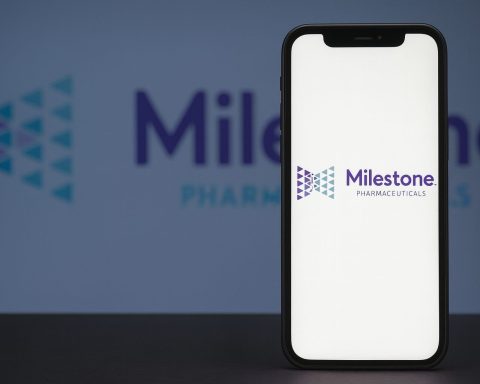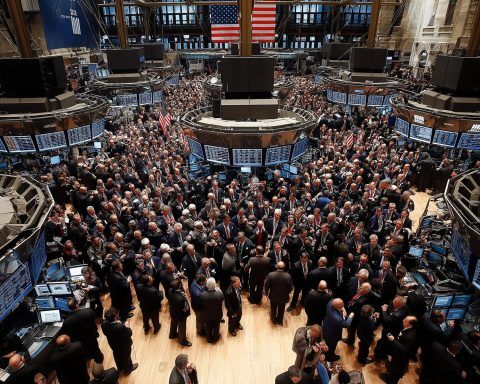- “Nano Banana” Image Upgrade Powers Better Videos: Google’s latest Nano Banana update is a new state-of-the-art image model (Gemini 2.5 Flash Image) that boosts photo realism and consistency [1]. It lets Gemini maintain a person’s exact likeness across edits and blends multiple images, and even feed those improved images into video generation [2] [3]. This upgrade lays the groundwork for high-quality photo-to-video transformations in the Gemini app.
- Photos to 8‑Second Videos with Sound: The Gemini app now lets users transform any still photo into an 8-second video clip with audio (sound effects, background noise, even dialogue) [4]. Powered by Google DeepMind’s Veo 3 AI video model, this feature animates your image based on a text prompt, producing a short video complete with music or ambient sound. Google says it has already seen an explosion of creativity – over 40 million AI videos generated in just seven weeks after launch [5].
- Easy Interface, Pro-Only Access: Using Gemini’s video tool is straightforward: select “Videos” in the app, upload a photo, and describe the scene and audio you want [6]. In about 1–2 minutes, Gemini outputs a 720p, 24 fps video clip [7]. (Google AI Pro subscribers get Veo 3 Fast for quicker 8s videos, while Ultra subscribers access the highest-quality Veo 3 model [8] [9].) Availability is limited to paid tiers – Pro users can make 3 videos/day and Ultra users 5/day [10] [11] – and the feature is rolling out in select countries [12]. All AI-generated videos are clearly marked, with a visible “AI” watermark and invisible SynthID digital watermark embedded [13].
- New Creative Tricks & Tips from Google: In a Google blog post, a creative producer shares 3 ways to use Gemini’s photo-to-video tool. First, animate illustrations – bring drawings or graphics to life as moving images [14]. (Videos output in 16:9 landscape, with black bars added if your image isn’t already widescreen [15].) Second, turn photography into a motion picture – start with a real photo and add imaginative twists or new characters; Gemini will “fill in the gaps” and animate the scene [16]. (Tip: the original photo becomes the first frame of the video, so a clear, close-up subject yields a better result [17].) Third, articulate an artistic vision – use detailed prompts to visualize storyboards or concepts for pitches [18]. The author notes it can be faster and more effective than static mockups, helping others “better visualize my concept” with realistic AI renderings [19]. Prompting takes practice – you might refine prompts through multiple tries [20]. You can even ask Gemini to suggest camera angles or edits to improve the video [21]. And if the results look too real, remember: SynthID tags and watermarks are there to ensure transparency that it’s AI-made [22].
- Cinematic Quality via Veo 3 and Flow: Under the hood, Gemini’s video creation is powered by Veo 3, Google DeepMind’s latest generative video model. Revealed at Google I/O 2025, Veo 3 is a cinematic-grade AI video generator capable of ultra-realistic visuals (even up to 4K in labs) with accurate physics, smooth motion and native audio generation [23] [24]. It not only produces vivid imagery but also synchronizes sound effects, ambient noise, and spoken lines – all from a text prompt [25] [26]. This all-in-one approach means your AI-created character can move and speak believably on screen, a unique advantage over some rivals. Google also introduced Flow, an advanced AI filmmaking interface built around Veo 3 [27]. Available to Pro/Ultra users in Labs, Flow lets creators string multiple AI-generated shots into longer scenes, with storyboard-style control. You can generate a series of clips with consistent characters and environments, use camera controls (pans, zooms, angle changes) and even “extend” scenes by generating what comes before or after a shot [28] [29]. In short, Flow + Gemini aim to be a virtual movie studio – handling visuals, camera, and audio – so that solo creators can produce multi-scene stories entirely with AI [30] [31].
- How Gemini Stacks Up Against Sora, Runway, Pika & Firefly: Google’s push into AI video comes amid a crowded field of text-to-video tools. OpenAI’s Sora (recently launched via ChatGPT) can likewise generate short clips from prompts. Sora is lauded for exceptional quality and cinematic flair, with strong temporal consistency between frames [32]. It uses a more “storyboard” style prompt interface, which some creators find intuitive [33]. However, Sora’s access is tiered – ChatGPT Plus users can make up to 720p, 10-second videos, whereas ChatGPT Pro ($200/month) enables 1080p up to 20 seconds and faster outputs [34] [35]. Sora also lacks native audio generation, meaning it produces silent videos (you’d need to add sound manually) [36]. By contrast, Gemini’s Veo 3 bakes in sound design automatically, which is a significant perk [37]. Runway ML, an early pioneer in generative video, has iterated rapidly from Gen-1 through Gen-2 and now Gen-3. Runway Gen-2 (first released 2023) was the first commercially available text-to-video model and wowed users with its progress [38] [39]. A late-2023 update to Gen-2 was widely hailed as “game changing” for its major boosts to video fidelity and consistency [40]. It allowed longer clips (initially ~4 seconds, later up to 18 seconds) and introduced “Director Mode” features like controlling simulated camera movements (panning, zooming, etc.) in the AI scene [41] [42]. Runway’s Gen-2 could take an input image and animate it (similar to Gemini’s photo-to-video) and even upscale output resolution (one update increased still-image-based video output to ~1536p) [43]. Now in 2025, Runway’s Gen-3 (alpha) continues to push realism and editing control, approaching professional-grade output quality [44]. Creators praise Runway for its comprehensive toolset (it offers a full web editor with keyframing, in-painting, etc.), though heavy usage can get costly and there may be queues at peak times [45] [46]. Like Gemini, Runway’s videos are presently mute (no auto-audio), focusing purely on visuals. Pika Labs is another emergent player, known for a more playful and stylistic approach to AI video. Launched in 2023 by a small startup (and backed by significant funding), Pika gained popularity for its unique “Pika Effects” – presets that add whimsical animations or trendy visual styles to videos [47]. It supports text-to-video and image-to-video, and is praised for being user-friendly and fast, making it great for social media content. Pika’s outputs tend to be shorter, stylized clips (perfect for memes, music visuals, etc.) rather than hyper-realistic cinema. As one analysis noted, tools like Runway and Pika have “carved out niches for stylized or experimental content,” whereas Google’s Gemini/Veo is “going after realism and delivering” on it [48]. In other words, Pika Labs excels at creative expression and ease of use, though it might not match Gemini’s photorealism. Pricing for Pika is relatively accessible (it offers a free trial and ~$10/month plans with set video credits) [49] [50], making it popular among indie creators. Industry giant Adobe has also entered the arena with Adobe Firefly generative video (currently in beta). Firefly’s text-to-video and image-to-video tools are integrated into Adobe’s web platform, aiming for 1080p high-quality clips of a few seconds. Adobe is emphasizing “brand-safe” AI video generation – Firefly’s model is trained on licensed or Adobe Stock content to avoid copyright issues, and is marketed as the first enterprise-friendly, “commercially safe” video generator. In practice, Firefly can animate images or generate short scenes with impressive detail (Adobe showcases examples like cinematic nature landscapes, product shots with camera fly-overs, and even close-ups of human faces) [51] [52]. It also offers some camera control sliders and styles, leveraging Adobe’s experience in visual effects. The trade-off is that Firefly is fairly constrained to ensure outputs are “legally safe” and properly licensed [53]. Adobe’s focus is on professional creators who need reliable rights-cleared footage – for example, marketing teams could generate quick B-roll or storyboards without worrying about IP violations. While Firefly’s raw visual fidelity is strong, Google’s Gemini has an edge in seamlessly generating audio and more dynamic, longer scenes (and of course, Google has the advantage of an established user base via the Gemini app). Competition is fierce, but each platform – Sora, Runway, Pika, Firefly, and Gemini – offers a slightly different mix of capabilities for different audiences and use cases.
- Reception: What Creators and Experts Are Saying: Public reaction to Gemini’s video tools has been largely enthusiastic. Many users have shared jaw-dropping examples on social media – from old family photos brought to life with subtle motion, to fantastical paintings animated into short films. Tech reviewers at Tom’s Guide put Gemini’s Veo 3 through its paces and were impressed. “I’ll admit it looks pretty legit,” one reviewer wrote after turning a selfie into a video of himself running on a beach, noting that while some fine details were a bit soft, “the video looks accurate” and even included the sound of waves and footsteps which “made it feel more believable” [54] [55]. In another test, the AI successfully added an “alien invasion” to a simple park photo – the result had a few quirky artifacts (UFOs popping in and out) but overall was a compelling little sci-fi scene generated in minutes [56] [57]. Such experiences highlight both the excitement and the current limitations: Gemini can produce amazingly realistic visuals and sound, but eagle-eyed users may still spot occasional glitches or blurs. Expert opinions suggest Google is at the forefront of a quickly evolving field. The team at Stockimg.ai, comparing top video models, noted that “in terms of pure output quality, Sora and VEO3 currently lead the pack,” with both producing videos that can be “difficult to distinguish from real footage” [58]. They emphasized Gemini’s advantage of native audio and Google’s robust AI backing [59]. Another analyst highlighted that Google’s integration of these tools (Gemini, Veo, Flow) creates “somewhat of an entire studio at your fingertips,” whereas others may require piecemeal solutions for sound or editing [60]. Still, there’s acknowledgement that no model is perfect yet – for instance, Veo 3 can struggle with very fast motion or complex interactions (e.g. multiple people talking), and it deliberately avoids generating recognizably real faces or copyrighted characters for ethical reasons. Notably, Google is consciously addressing the ethical and safety concerns around generative video. In its announcement, Google emphasized extensive “red teaming” and policy enforcement to prevent misuse of AI videos [61]. Every Gemini-made video is watermarked to discourage deception [62]. This cautious approach has been well-received by most experts, who agree it’s critical to label AI content clearly as it becomes more lifelike. Some creators remain uneasy about AI imagery – even a Google producer admits she “fluctuate[s] between feeling excited and uneasy” when using these tools, but ultimately finds that the AI-generated art allows her to create visuals that wouldn’t have existed otherwise, enhancing her work rather than replacing it [63]. That cautious optimism – embracing the new creative potential while keeping an eye on the pitfalls – sums up much of the public sentiment.
In the span of a few months, Google Gemini’s “Nano Banana” update and video generation features have catapulted the platform to the cutting-edge of AI creativity. By blending a powerful image editor with a generative video engine, Gemini enables anyone with a subscription and an imagination to produce short “films” from a single photo or prompt. This convergence of image and video AI – along with competitors racing neck-and-neck – suggests we’re entering a new era where storytelling might just start with a text prompt and a dream. And Google’s message to creators is clear: Lights. Camera. AI-Action! [64]
Sources:
- Google Blog – “Image editing in Gemini just got a major upgrade” (Nano Banana update) [65] [66]
- Google Blog – “Turn your photos into videos in Gemini” (David Sharon) [67] [68] [69] [70] [71]
- Google Blog – “3 ways to use photo-to-video in Gemini” (Tatiana Gonzalez) [72] [73] [74] [75] [76] [77]
- Tom’s Guide – “I transformed photos into videos with Google’s Veo 3 – jaw-dropping results” [78] [79] [80]
- ProTunes One – “Gemini’s New Video Creation Tool: What It Means for Creators” [81] [82] [83]
- Stockimg AI Blog – “Comparing the Best AI Video Generation Models: Sora, VEO3, Runway & More” [84] [85] [86] [87] [88]
- VentureBeat – “Runway’s Gen-2 update… incredible AI video” [89] [90] [91]
- OpenAI – Sora product page [92] [93]
- Adobe – Firefly AI Video Generator page [94] [95]
References
1. blog.google, 2. blog.google, 3. blog.google, 4. blog.google, 5. blog.google, 6. blog.google, 7. www.tomsguide.com, 8. gemini.google, 9. gemini.google, 10. blog.google, 11. blog.google, 12. blog.google, 13. blog.google, 14. blog.google, 15. blog.google, 16. blog.google, 17. blog.google, 18. blog.google, 19. blog.google, 20. blog.google, 21. blog.google, 22. blog.google, 23. protunesone.com, 24. protunesone.com, 25. protunesone.com, 26. protunesone.com, 27. protunesone.com, 28. venturebeat.com, 29. venturebeat.com, 30. protunesone.com, 31. blog.google, 32. stockimg.ai, 33. stockimg.ai, 34. openai.com, 35. openai.com, 36. protunesone.com, 37. stockimg.ai, 38. venturebeat.com, 39. venturebeat.com, 40. venturebeat.com, 41. venturebeat.com, 42. venturebeat.com, 43. venturebeat.com, 44. stockimg.ai, 45. stockimg.ai, 46. stockimg.ai, 47. generativeai.pub, 48. protunesone.com, 49. www.tomsguide.com, 50. www.tomsguide.com, 51. www.adobe.com, 52. www.adobe.com, 53. www.adobe.com, 54. www.tomsguide.com, 55. www.tomsguide.com, 56. www.tomsguide.com, 57. www.tomsguide.com, 58. stockimg.ai, 59. stockimg.ai, 60. protunesone.com, 61. blog.google, 62. blog.google, 63. blog.google, 64. blog.google, 65. blog.google, 66. blog.google, 67. blog.google, 68. blog.google, 69. blog.google, 70. blog.google, 71. blog.google, 72. blog.google, 73. blog.google, 74. blog.google, 75. blog.google, 76. blog.google, 77. blog.google, 78. www.tomsguide.com, 79. www.tomsguide.com, 80. www.tomsguide.com, 81. protunesone.com, 82. protunesone.com, 83. protunesone.com, 84. stockimg.ai, 85. stockimg.ai, 86. stockimg.ai, 87. stockimg.ai, 88. stockimg.ai, 89. venturebeat.com, 90. venturebeat.com, 91. venturebeat.com, 92. openai.com, 93. openai.com, 94. www.adobe.com, 95. www.adobe.com










